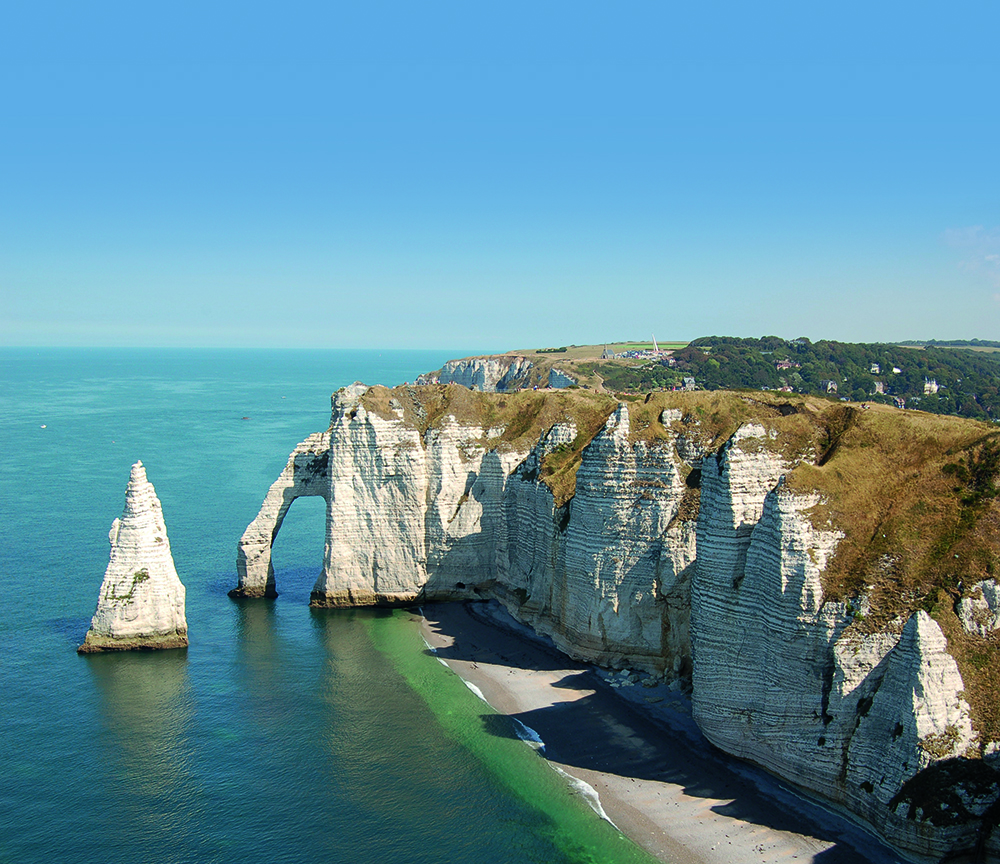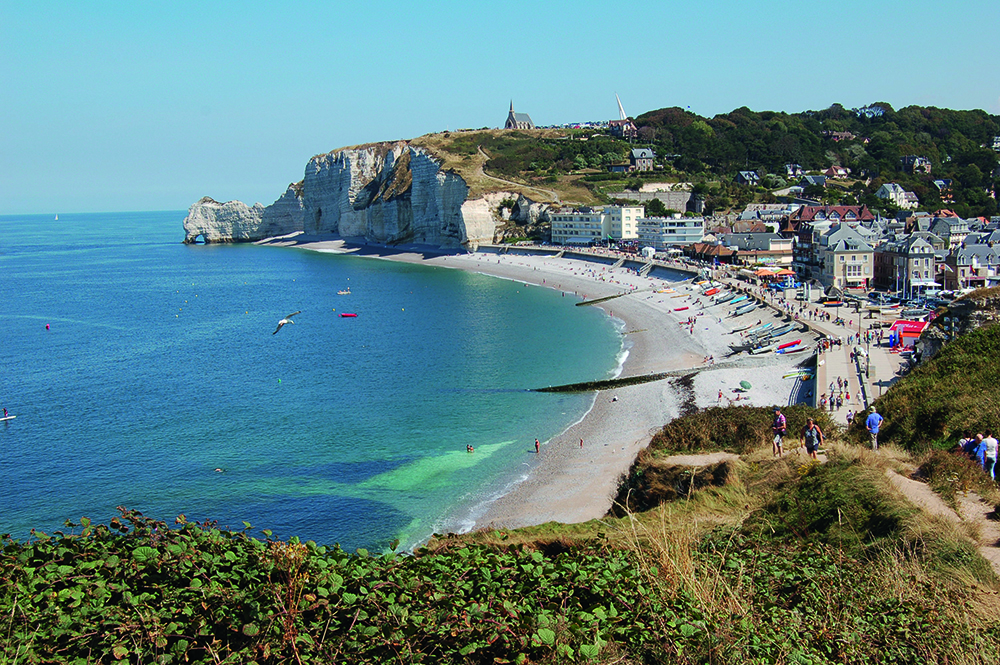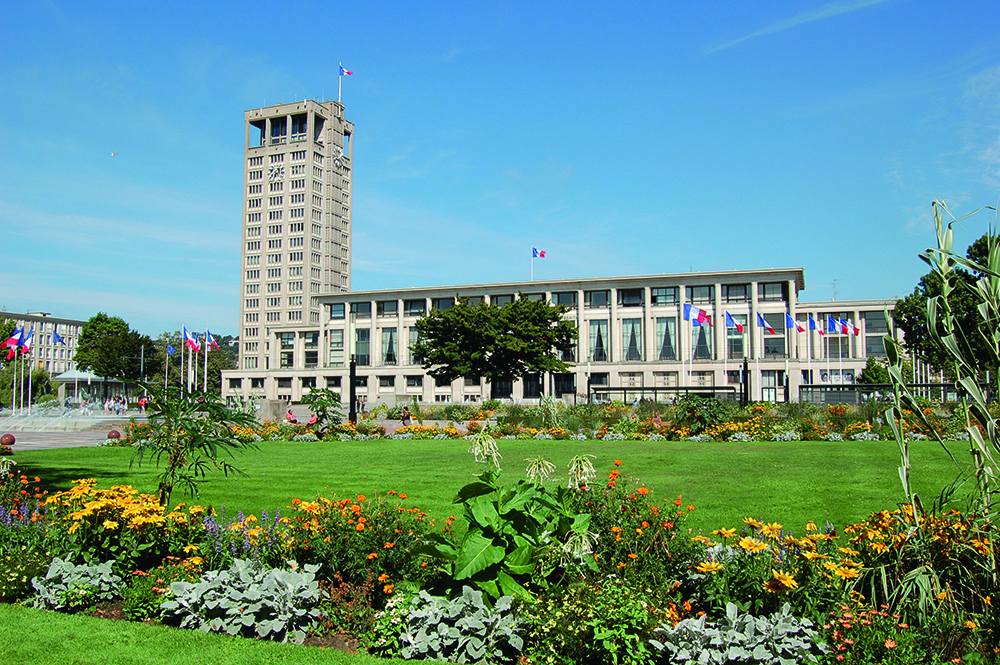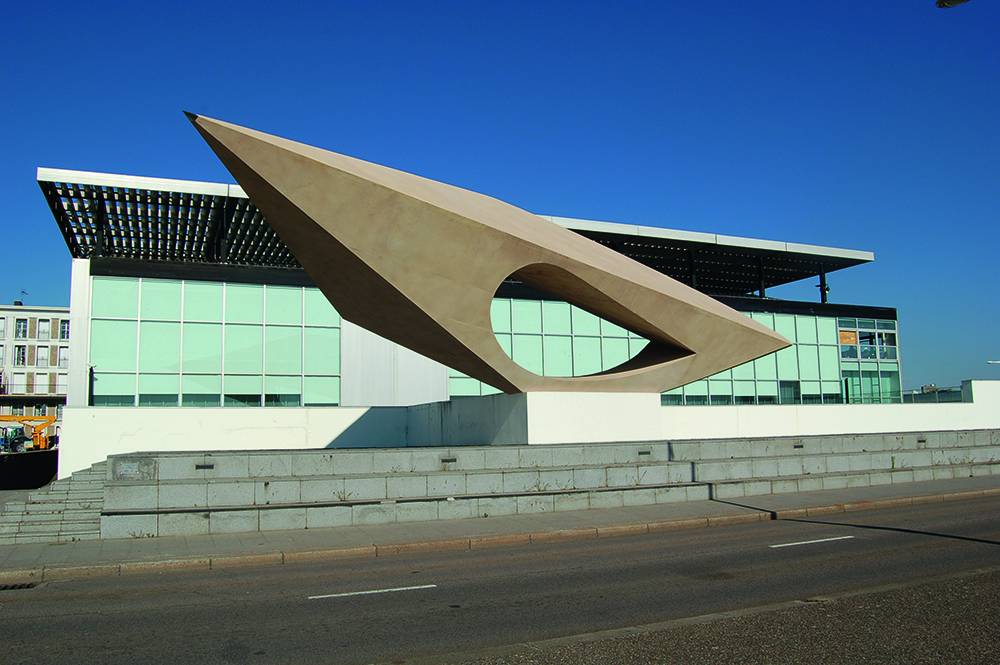Motorhome travel: Motorhoming in Normandy

Maybe Normandy isn’t quite a land flowing with milk and honey, but cream, cheese, cider and Calvados make pretty acceptable alternatives. Picture postcards of Normandy show speckled cows grazing contentedly under laden apple trees in the orchards of colourful half-timbered farms. And that’s just how it is! The grass is said to be greener as well – but the pragmatic Normans put that down to their abundant rainfall. I can’t vouch for that. We had wall-to-wall sunshine every day when we visited.
We were in Normandy by default, in a way. We had expected to be down to one driver after an operation on my ankle and did not want to go far. Recovery was surprisingly rapid, though and, suddenly, the world was our oyster. The Dordogne, Burgundy, the Loire, even the south. Where to go? For a few mad hours we were guilty of that ‘farther is better’ misconception. Then reason prevailed and we decided we’d prefer to stick with our plans to stay in the Pays de Caux, that little triangle of land behind Le Havre between the high chalk cliffs of the Alabaster Coast and the forests of the Seine valley.
Years ago we were involved in writing a walking book in that area; another time I had been tracking Henry V’s armies across the Caux en route for Agincourt. Now we would just please ourselves and do something I’d wanted to do for ages – take time to visit Le Havre itself. Truly, it’s a fascinating city, but more of that later…
Bowling off the overnight ferry, it was immediately clear the day would be hot. The wooded Seine valley and the shady campsite at Jumièges were the obvious answer and we should have stayed right on site when we arrived. Instead we crazily headed off on our bikes on something called the Route des Fruits alongside the river. The fruit was certainly there, though not yet quite ripe enough for the roadside stalls. The road was delightfully flat (appreciated by those who come from Wales!), but there wasn’t a speck of shade and we returned to our site nicely toasted on all sides.
The Seine goes into wild convolutions in its lower reaches, apparently trying to put in as many miles as it can before being swallowed up by the sea. The whole area has become a regional natural park (Boucles de la Seine). Jumièges is tucked into one of the river’s loops and that little town is all about its abbey, which was plundered by the Vikings and in every conflict from that time on.
Opposite the abbey the road leads down to a ferry across the Seine. Ferries are irresistible and, despite the heat, we were over there with our bikes next morning. A riverside ride to the national park’s headquarters ensued and, notwithstanding an inviting line of flags outside, they had little more to offer us than a sheaf of leaflets. Thus armed with literature we returned – and we should have known better than to believe the regular three-times-an-hour schedule posted on the ferry notice board. No self-respecting Frenchman could do justice to his lunch in 20 minutes, 40 minutes or even an hour; it was a long and hot wait.
The leaflets proved useful though because, next day, we took ourselves off to the state-of-the-art maritime museum (MuséoSeine) at Caudebec-en-Caux – which was more than worth a visit – and then into the Brotonne Forest (Forêt de Brotonne), all contained within a twist of the river. The Brotonne is particularly proud of its attractive thatched cottages known as chaumières. There’s a village by the name of Vieux-Port where I found myself sneakily pointing my camera over every gateway. A chapel in a yew tree, a historic bread oven in full production and a ruined leper hospital concluded the day. The latter is certainly interesting but following the signs to it had us wedged in an ever-narrowing lane. Beware!

On a bright, but cooler, morning we arrived at Étretat. It was fortunate that it was morning because that municipal campsite became complet every afternoon. Everyone wants to visit Étretat with its little shingle beach flanked by high chalk cliffs on either side. The arches and stacks in those cliffs feature on just about every book and brochure of Normandy.
In his day, Monet painted Étretat’s seascapes many times over and Corot, Courbet and Boudin did much the same. And it wasn’t only artists who loved Étretat. The tourist office also proudly tells you that the popular French writer, Guy de Maupassant, spent his childhood here, author, Alexandre Dumas had a villa – as did composer, Jacques Offenbach – and the one-time Queen of Spain had a château. In addition, André Gide (French writer and Nobel Prize winner) was married here and Victor Hugo a frequent visitor, while Marie-Antoinette merely had her own oyster park under the cliffs!
The one former resident of Étretat I really wanted to find out about was Maurice Leblanc, the creator of Arsène Lupin. Lupin, for those who haven’t come across him, was a ‘gentleman-burglar’ and France’s literary answer to Sherlock Holmes, whom he set himself up against regularly (albeit in the name of Holmlock Shears). It’s all fanciful stuff, but very great fun, so we had to visit Leblanc’s villa, Clos Lupin, where his granddaughter had set up an exhibition. The villa was beautiful and the exhibition rather dated – in keeping with the vintage of the stories, I suppose.
Anyone visiting Étretat is going to want to climb the cliffs, even if it does involve a lot of legwork. I think there are 186 steps up the eastern Amont cliff, which is topped by the chapel of Notre-Dame de la Garde and, behind it, a long white finger like the gnomon of a giant sundial, pointing to the sky. This latter curiosity is a memorial to two airmen, Nungesser and Coli, who set out to fly the Atlantic in 1927. Last seen over Étretat, they never arrived, but are recognised as the ‘first to dare’.
The dramatic western Aval cliff makes an even more popular walk and there are fabulous views over the town and then of the most famous arch (Porte d’Aval) and the needle-like rock behind it (l’Aiguille d’Étretat). The crowd did thin as we carried on from there past Manneporte – another of this coastline’s famous arches – after which we descended into a deep valley, met a herd of serious contenders for the ‘world’s most beautiful donkeys’ and proceeded to get hopelessly lost trying to follow an old route we thought we knew. That evening we had a meal at a restaurant on the seafront and almost, almost, watched the sun sinking into the western sea. Why does a layer of cloud always seem to show up from somewhere just at the last minute?

On our last day at Étretat we returned to Le Havre; the port has a story. Three months after D-Day it had still not fallen to the Allies and they controversially resorted to heavy bombing. Le Havre was reduced to rubble, 5,000 inhabitants lost their lives and 80,000 people required urgent rehoming at minimal cost. This task was given to the architect Auguste Perret, who was then already in his seventies. Perret seized the opportunity and had a field day in his favourite medium, reinforced concrete. In 2005, Perret’s still-handsome new city was inscribed on the UNESCO World Heritage List. All this we knew, but the extent of that rebuilding was a surprise. In street after street all the buildings are the same: grey apartment blocks with shops on the ground floor. Yet, it is not unattractive.
Parking the ’van near the seafront, we walked along the wide Avenue Foch where the well-off once had their houses and gardens. Only flats were allowed in the rebuilding and, apparently, these were distributed according to each person’s earning power. The tourist office now offers tours of one of these flats. It seems the whole town is built on supports set exactly 6.24m apart, into which the pre-formed concrete blocks slot almost like pieces of Lego. Calm, space and light were Perret’s requirements for his apartments, along with more mod cons than you might expect from the early 1950s and, for the first time, mass-produced furniture.
The flats command a tidy price today; the lady who showed us round said she couldn’t afford one herself. Of course there’s more to a town than apartments and we looked in on the concrete Hôtel de Ville, which is fronted by gardens with most imaginative fountains. A few streets away the Église Saint-Joseph is a real pièce de résistance. The tower leaps an enormous 107m (351ft) into the sky and, although from the outside the building is unappealing, once inside it is quite different. Perret enlisted the services of stained glass artist, Marguerite Huré, and both walls and tower are inlaid with irregular pieces of glass, coloured according to their solar orientation and paling towards the top of the tower. The effect is stunning.

It seems Le Havre is sticking with concrete. A more recent addition at the end of the yacht basin is the gleaming white Le Volcan by the Brazilian architect, Oscar Niemeyer, referred to (not unreasonably) as the ‘yogurt pot’. It functions as a cultural centre but, should you ever be there, just put your head in the library alongside. You will have seen nothing like it! We promised ourselves a return to Le Havre (the art gallery has ‘the best collection of impressionists outside Paris’ but we were too late) and to Étretat, too, but we moved up the coast for our last few days.
The pretty seaside village of Veules-les-Roses was our destination and its beach was an easy walk down the cliff from the site. Classic Normandy beach huts overlook a shingle shore and the village itself sports an array of quirky shops, perfect for presents. Clothes of pure linen were much in evidence – the plateau of the Caux is one of Europe’s most important regions for growing flax. Wandering out from Veules-les-Roses we arrived at its much bigger neighbour, St Valery-en-Caux and were a bit put off because ’vans are forbidden to access the beach. The aire under the cliffs looked pleasant, though, if you felt you could survive the narrow access road with the sea on one side.
Another day we roamed north to Quiberville, where the morning catch of shellfish had just arrived and enthusiastic connoisseurs almost mobbed the boats. Our final excursion was to cycle the new greenway known as the Route du Lin (Flax Route). Normandy has quite a few cycle-only tracks, the most famous of which is the Avenue Verte linking London to Paris. I’ve a hankering to do that one day!
For the moment, though, we just started from St Pierre-le-Viger, 4.8km (three miles) south of Veules-les-Roses, cycling up the valley and on through fields laid out with dark ‘dew-retting’ flax. It’s apparently more attractive in spring when those fields are a sea of blue flowers. Nevertheless, the ride is pleasant and easy and we were most impressed with the provisions for cyclists – seats, picnic tables and composting toilets. There are even a couple of hammocks for the really exhausted!
Back home, we realised we’d never been more than an hour’s drive from Le Havre. We’d had just the merest taste of Normandy and enjoyed every minute of it. Normandy is so full of character and packed with interest. To stay was a good decision!
This feature was originally published in the February 2018 issue of MMM magazine. Subscribe to MMM magazine today for your monthly dose of motorhome travel inspiration.








.jpg)


Recent Updates
Engine management lights: all you need to know
What is the engine management light? What does it mean, and what do I have to do? ...
Motorhome air suspension: all you need to know
Motorhomes are heavy and the additional weight of equipment and height of the bodywork can increase the loads ...
Motorhome WiFi: how to get better motorhome internet
Staying connected on the move is more and more essential, so relying on campsite WiFi isn't an option – here ...
A class of their own - our guide to A-class motorhomes
Thinking of trading up to an A-class, or even going straight to the top of the motorhome tree? We guide you ...
Explore overseas on a motorhome dream tour
Enjoy exotic travel in a campervan or motorhome by hiring, swapping with someone else or exporting your ...
Motorhome water systems: everything you need to know
On-board water is an important part of every motorhome – here’s everything you need to know ...
Campervanning in Europe: what you need to know
Whether you're planning a leisurely drive through the French countryside, navigating bustling city streets in ...
Campervan security: all you need to know
With thefts on the increase, it’s important to know how to keep your campervan secure and prevent campervan ...
Campervan furniture: everything you need to know
Our campervan experts guide you through all the essentials for your campervan, including tables, chairs, ...
Campervan finance: how to fund your purchase
Here we look at the different types of campervan finance available, to help you decide what’s the best option ...
Other Articles
Britain’s best used motorhomes
Want a great motorhome without paying the premium for a new one? Here's a guide to the best you can get in the pre-owned market for each layout, ...
Which motorhome? Choosing the perfect motorhome for you
Choosing a motorhome or campervan is one of the biggest buying decisions you’ll ever make, so it's important ...
Campervan washroom essentials: stay fresh on the road
Our guide will take you through the campervan washroom essentials you'll need so you're well-prepared for ...
Dogs in campervans: all you need to know
Follow our advice and your dog will enjoy campervanning as much as you do ...
Electric campervans: all you need to know
Our guide will take you through everything you need to know about electric campervans and what the future ...
Motorhome electrics: a complete guide to your motorhome electrical set-up
Motorhome electrics can dramatically enhance the convenience and comfort of your vehicle – but they can be ...
Lighting for campervans: all you need to know
We guide you through all the lighting options available for you and your campervan, including interior ...
Electric bikes for motorhomes: our ultimate guide
Read our comprehensive guide to electric bikes for motorhome owners, helping you add electric power to your ...
Our guide to 'cheap' motorhomes in 2024
If you're on the hunt for an affordable new motorhome, this is the best place to start – we've rounded up a ...
Campervans in winter: all you need to know
Here's your guide to preparing your campervan for the colder months, whether you will be using it or putting ...